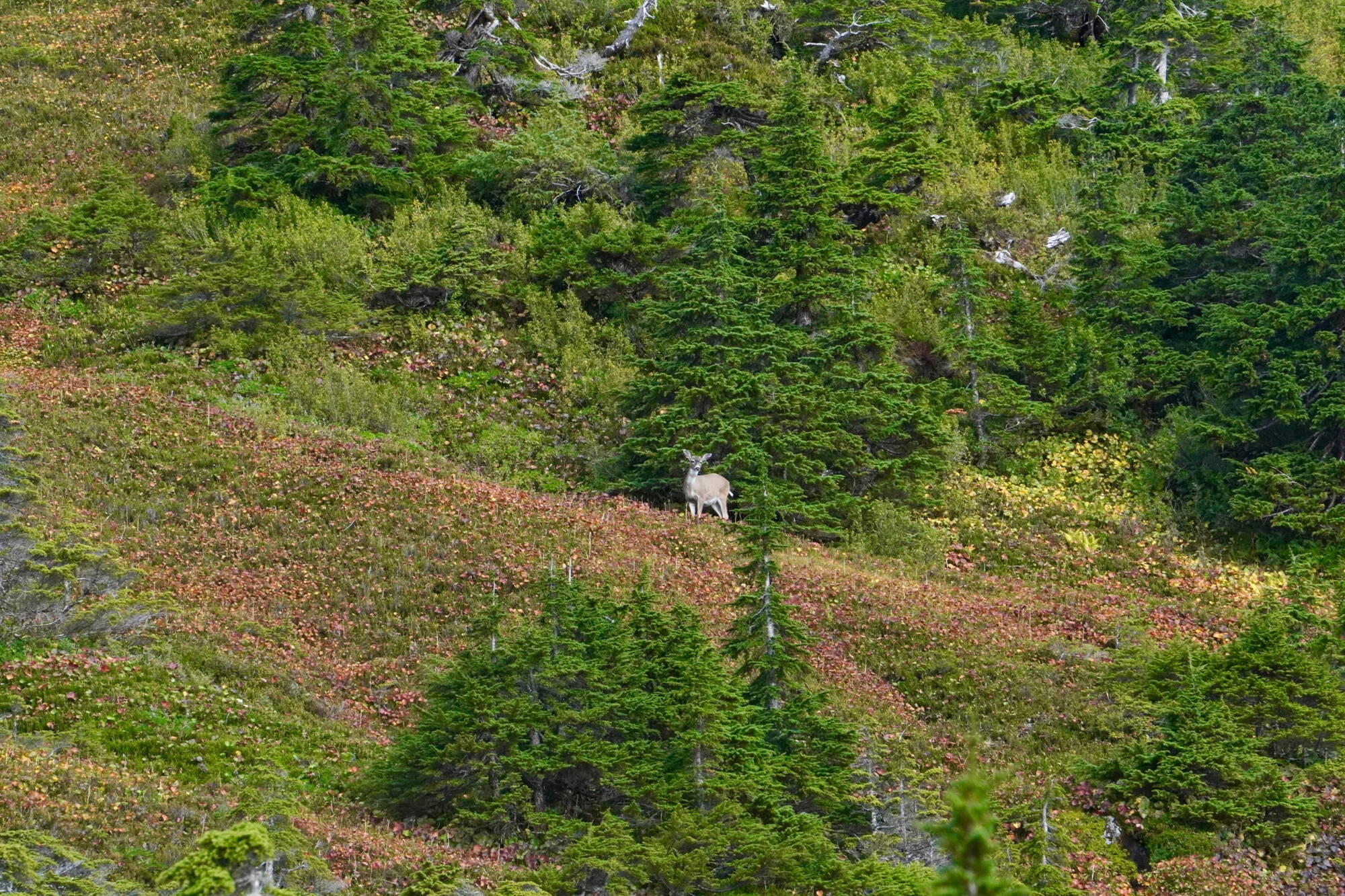The alpine deer cabbage was yellow and gold, a sign of the coming fall. From a distance even the leaves turned brown seemed to take on a reddish shade out of loyalty to the scene. There is nowhere like the alpine in the fall. Up close there is no mistaking that the plants are done for the year, but from 50 or more yards out, the scene is serene and bucolic. A view like this will make a Southeast Alaskan say September is their favorite month. The chaos of downtown is tapering, the mosquitoes are tolerable and nothing seems more right than a walk on a mountain ridge.
I was up there looking for a deer in what will likely be my last trip to the alpine this year. With my wife due to have our first child on Sunday the 15th, I’m not sure I could get away with another alpine getaway hours before the biological countdown ends. Nor would I want to. It did feel a little odd to leave my wife at home knowing how much she loves hiking in the mountains but she insisted and went to work on the last of the garden harvesting potatoes, onions and processing the dried garlic she picked weeks ago.
This time of year demands you slow down and take a breath, though steady action continues. It’s been non-stop since May. Fish. Hunt. Gather. Process. Freeze. Move. Move. Move. Time is almost up on summer and the flora lets you know.
Except the alders. I complain often about alders, mostly because I think about what could be.
There are large swaths of alders growing in Southeast, but nothing about their presence adds to the coming of fall. There is no brilliance in an alder transitioning into winter, no splendor. It simply closes up shop. After a summer of enthusiastic green, it doesn’t matter if it’s been sunny and hot or cool and rainy, the leaves take on an overcooked hue and that’s it. It’s over. They fall without ceremony.
I have heard alders be mistaken for birch, willow and poplar — three fall color participants — during summer by people who can’t quite place them. I tell them it happens, but you certainly wouldn’t make the same mistake in fall.
I appreciate salmonberry bushes for the tart fruit, but they are pushy and overbearing. Still they put their personal quest for yard dominance aside for the good of fall and manage at least a complimentary color scheme.
The alders are just not into it.
But nature is about complementary give and take. The alder is a good smoking wood and during Native art class in middle school, it was alder that we used to hone our carving skills before we messed with cedar. They are quality climbing trees, shade trees (not that we often need them) and provide quick-growing privacy between neighbors (should you want it). Deer mark their territory on them, beavers build dams with them. The bark can be used as a dye or to stain antlers after the velvet has been removed.
They just aren’t showy or demonstrative.
I glassed up a few does and mountain goats and looked at the veins of alder. I keep thinking of things I want to impress upon my daughter when she is old enough and that’s one of them. I hope once she is old enough to comprehend what she is seeing, she won’t see an alder like I sometimes do. I hope she appreciates it for what it is. I hope she values the individuality and purpose of all things rather than just what demands the most attention.
• Jeff Lund is a freelance writer based in Ketchikan. His book, “A Miserable Paradise: Life in Southeast Alaska,” is available in local bookstores and at Amazon.com. “I Went to the Woods” appears twice per month in the Sports & Outdoors section of the Juneau Empire.

